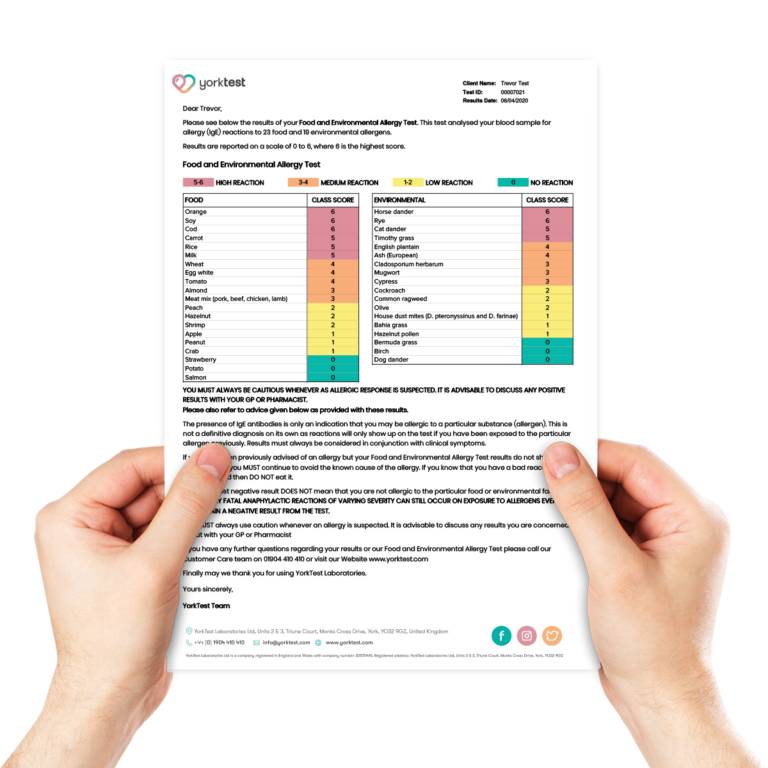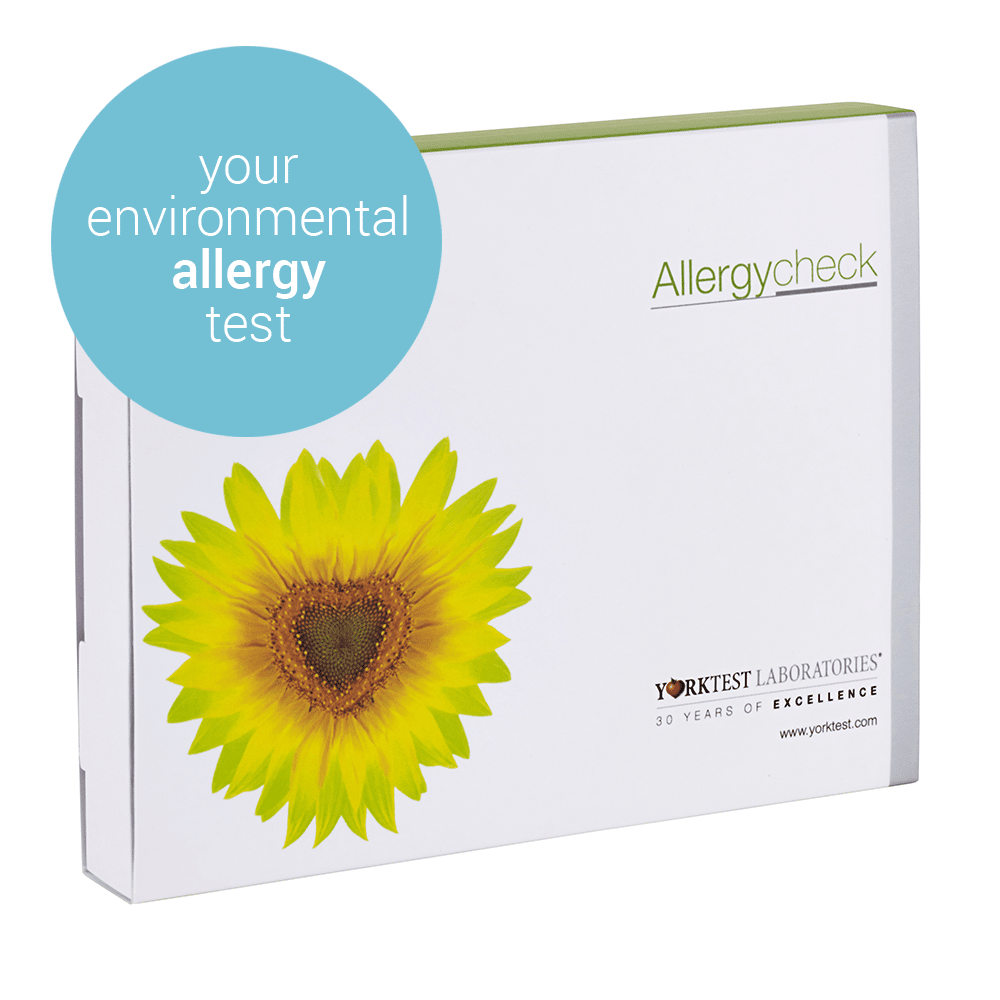Broad Categories Of Allergy Tests Or Procedures
1. Allergy Skin Testing
This is used to evaluate for suspected environmental or seasonal allergies, food allergy, stinging insect allergy, and certain drug/medication allergies. During skin testing the suspected allergen is placed on the skin and the test results are read after 15 minutes. An allergen is a substance that can cause an allergic reaction. There are 2 methods for skin testing: prick skin testing and intradermal skin testing.
Prick skin testing: Individual solutions containing the suspected allergens are placed on the skin using a prick device. The test results are available 15 minutes later.
Intradermal skin testing: Individual solutions containing the suspected allergens are placed just underneath the surface of the skin using a small needle. The test results are available 15 minutes later.
Your allergist will determine which specific type of skin test is required.
All test results are interpreted by your allergist.
How to prepare for Allergy Skin Testing:
- Avoid all antihistamines and sleep aids that contain antihistamines for 5 days prior to your appointment. The reason for this is that antihistamines will block positive skin test results, thereby making the results unreliable.
2. Blood tests
Your allergist will determine if you require blood tests and these test results will be interpreted by your allergist while taking into consideration your medical history and other findings from your evaluation.
3. Spirometry
4. Food Challenges
6. Aspirin Desensitization
The Risks Of Allergy Testing
Allergy tests may result in mild itching, redness, and swelling of the skin. Sometimes, small bumps called wheals appear on the skin.
These symptoms often clear up within hours but may last for a few days. Mild topical steroid creams can alleviate these symptoms.
On rare occasions, allergy tests produce an immediate, severe allergic reaction that requires medical attention. Thats why allergy tests should be conducted in a doctors office that has adequate medications and equipment, including epinephrine to treat anaphylaxis, which is a potentially life threatening acute allergic reaction.
Call 911 immediately if you have symptoms of anaphylaxis, such as:
- swelling of the throat
What Are The Symptoms Of Environmental Allergies
Symptoms of environmental allergies are caused by your bodys immune reaction to the allergen and usually continue for as long as you are exposed to the allergen. Symptoms may include::
- Chronic sinusitis
- Eye problems, such as redness, watering, itching, or swelling
- Itchy skin or nose
- Sneezing or a runny nose
- Wheezing, coughing, or shortness of breath
Read Also: Can Allergies Make You Hot And Cold
Is There Anything Else I Need To Know About An Allergy Blood Test
Allergy blood tests may not always be accurate. Sometimes the results may say you have an allergy when you actually don’t . This may happen if your body is having a slight reaction to substances in certain foods that you may have eaten before the test. It’s uncommon for a blood test to show that you don’t have an allergy when you actually do .
Depending on your medical history and symptoms, your provider may order an allergy skin test with an allergy blood test, or you may have a skin test alone.
How Are Seasonal And Environmental Allergies Diagnosed

It is important to know which allergens cause you to have symptoms. Once you learn what you are allergic to, you will be able to work with your allergist to develop a plan to reduce your symptoms.
- The first thing to do is see a board-certified allergist, who will do the following:
- review your health history and your familys health history
- ask about the frequency and severity of your symptoms
- ask what activities might expose you to allergens
- ask about your home and work environments
- perform a physical exam of your eyes, ears, nose and lungs
Your allergist may recommend allergy testing. Allergy testing will be used to pinpoint which allergens are affecting you. A positive test reveals you are sensitized to a particular allergen. The allergist will then put all the evidence together to reach a diagnosis.
Consider taking the Rhinitis Control Assessment Test before you visit your doctor. The test will look for clues to whether you have allergic rhinitis, or nasal allergies.
Read Also: How To Relieve Indoor Allergies
Why Do I Need An Allergy Blood Test
Your health care provider may order allergy testing if you have symptoms of an allergy. These include:
- Stuffy or runny nose
Your provider may choose to order an allergy blood test if you can’t have allergy skin testing. Skin testing involves putting allergens directly on or into your skin. You may not be able to have skin testing if you:
- Take certain medicines that may affect the results of the test
- Are likely to have a serious allergic reaction to the allergens used in skin testing
In certain cases, providers may order allergy blood tests for young children, because skin testing may be too uncomfortable for them.
Diagnostic Tests For Environmental Allergies
- Skin testing. Skin testing, also called scratch testing, exposes your skin to small amounts of allergy-causing substances and can identify environmental allergy triggers, such as pollen, dust mites, pets, and mold.
- Blood tests. Blood tests measure the amount of immunoglobulin E antibodies in your blood that are specific to certain allergens. Although blood tests are not as exact as skin tests, your doctor may use them in combination with skin tests to diagnose and treat your allergy.
Don’t Miss: Can You Develop A Soy Allergy
Medical History And Physical Exam
Your doctor will begin by taking your medical history. It will help your doctor if you come into the appointment with a list of symptoms and some ideas of what you believe you may be allergic to. Jot down your symptoms and when they occur, and things that make them worse or better.
If you have a family history of any illnesses, allergies, or asthma, let your doctor know. Be ready to tell the doctor about any drugs and supplements you take, your diet, and your lifestyle at home, work, and school. All of this information can paint a broader picture of your health and any potential allergies.
The doctor will also conduct a physical exam. They will look at your skin, eyes, ears, and throat, and listen to your breathing. Then, they may order blood tests, skin tests, or X-rays.
Sometimes, the doctor will ask you to keep a symptom diary if they suspect an allergy but need more information from you.
What Is It Used For
Allergy blood tests are used to help find out if you have an allergy. There are two general types of allergy blood tests:
- A total IgE test is used to measure the total amount of IgE antibodies in your blood.
- A specific IgE test measures how much IgE your body makes in response to a single allergen. A separate test is done for each allergen that may be causing your allergies.
Recommended Reading: What Is Dust And Dander Allergy
How Do We Test For Allergies
Here is a quick list of how to get tested on what you are allergic to:
A skin or patch test is a very convenient way to know what your allergies are. They are non- invasive, meaning, no needle is injected and causes no pain. In our clinic, we use the AllergiEnd® Allergy Testing for patch testing and it can detect results in as fast as 20 minutes.
It has the ability to test for more than 70 different allergies and has very little side effects, it is safe and easy to do.
Allergy skin prick test is done by pricking the skin and testing for allergies in the prick. It is done either in the back of the forearm. This is more invasive than patch testing.
When Is An Allergy Blood Test Needed
You may need an allergy blood test if you have:
- Allergic rhinitis , usually the result of pollen, pet allergies or mold .
- Anaphylaxis, which is a severe and sometimes life-threatening allergic reaction to certain foods, insect stings or other allergens.
- Contact dermatitis, caused by contact with irritants such as chemicals, detergents, poisonous plants or certain metals .
Allergy symptoms may include:
- Wheezing, tightness in your chest or allergic asthma.
Recommended Reading: How To Reduce Under Eye Swelling From Allergies
How Can I Treat My Dog’s Environmental Allergies
Its important to understand there is no cure for atopy, just management. Even with great treatment, your pet will have occasional flare-ups. The goal of treatment is to reduce the frequency and intensity of these flare-ups.
Steroids used to be the main drug type used to treat atopy and give itch and inflammation control. Unfortunately, steroids can have a lot of negative short and long term side effects
How The Test Is Performed

There are three common methods of allergy skin testing.
The skin prick test involves:
- Placing a small amount of substances that may be causing your symptoms on the skin, most often on the forearm, upper arm, or back.
- The skin is then pricked so the allergen goes under the skin’s surface.
- The health care provider closely watches the skin for swelling and redness or other signs of a reaction. Results are usually seen within 15 to 20 minutes.
- Several allergens can be tested at the same time. Allergens are substances that cause an allergic reaction.
The intradermal skin test involves:
- Injecting a small amount of allergen into the skin.
- The provider then watches for a reaction at the site.
- This test is more likely to be used to find out if you’re allergic to bee venom or penicillin. Or it may be used if the skin prick test was negative and the provider still thinks that you’re allergic to the allergen.
Patch testing is a method to diagnose the cause of skin reactions that occur after the substance touches the skin:
- Possible allergens are taped to the skin for 48 hours.
- The provider will look at the area in 72 to 96 hours.
Also Check: What Do Allergy Shots Do
What Is An Allergy Test
An allergy test is a method of identifying substances that trigger allergic reactions.
You can inhale, ingest, inject or come into contact with triggers through the skin, and the severity of a reaction varies from person to person. Allergy tests check for the presence of specific antigens by introducing the substance to your body and observing any physiological responses.
Allergy skin tests are a great way to diagnose food and environmental allergies, says Ratika Gupta, M.D., a board-certified allergist and immunologist at ENT and Allergy Associates in Brooklyn, New York, and founder of Bebaby baby cream. Typical allergy tests measure your response to environmental triggers like pollen and mold, as well as foods, medications and chemical substances. Your doctor may choose to test for multiple potential allergies at the same time.
While allergy tests shed light on the cause of your symptoms, they dont always provide a complete picture. The reaction for environmental allergies and food allergies isnt indicative of severity, says Dr. Gupta. However, she notes that the severity of seasonal allergies is dependent on the person and how symptomatic they are.
Treatment Of Allergy Symptoms
If testing confirms you have an allergy, you can work with your doctor or allergist to develop a treatment plan. These plans focus on methods to manage your symptoms and reduce your risk for more serious reactions.
Common allergy treatments include:
- Avoiding your trigger. Minimizing your exposure to triggers is an effective way to manage allergy symptoms.
- Antihistamines. These medications help block the effects of histamine, a chemical released during an allergic reaction.
- Allergy shots . Regular allergy shots may help reduce your sensitivity to allergens.
- EpiPen injections. This emergency medication treats serious allergic reactions. People at risk for anaphylaxis should always carry an EpiPen with them.
Other medications like decongestants and corticosteroids may help reduce congestion and inflammation to provide more relief from allergy symptoms.
Allergies can be a burden, but testing and treatment can help manage your symptoms. Talk to your doctor about allergy testing and the best way to treat your allergies.
Don’t Miss: How To Cure Allergy Rash On Face
Skin Prick Test Procedure
-
The test is performed on the inside of the forearm but in some cases it may be carried out on another part of the body such as the back
-
The steps for the SPT include the following:
-
Cleaning the skin with an alcohol swab
-
A pen or marker will be used to label the skin and identify the allergens to be tested
-
Tiny liquid drops will be placed on the skin
-
The skin is then pricked through the drop using a metal device called a lancet
-
The doctor or nurse will return in 15 minutes to interpret the test
The test may feel a little sharp but is generally not painful and does not cause any bleeding
Any allergies will cause a localized red bump that is itchy and usually appears within 5 to 15 minutes
The bumps will be measured with a ruler by the doctor or nurse
These itchy bumps usually go away within 30 minutes
The test is very safe in most people, but certain people may not be suitable for the SPT such as those with active wheezing. Your doctor will decide if it is safe to do the test
Why Allergy Blood Tests Are Done
Allergy skin testing is the preferred method, but in some cases blood testing may be ordered.
Allergy blood testing is recommended if you:
- Are using a medicine known to interfere with test results and cannot stop taking it for a few days this would include antihistamines, steroids, and certain antidepressants.
- Cannot tolerate the many needle scratches required for skin testing
- Have an unstable heart condition
- Have poorly controlled asthma
- Have severe eczema, dermatitis, psoriasis, or another severe skin condition
- Might have an extreme reaction during skin testing or have a history of life-threatening allergic reaction called anaphylaxis
Your doctor may also order blood testing to determine how well your allergy treatments are working. Blood testing may also show whether you have outgrown an allergy.
Read Also: Can You Take Allergy Pills With Dayquil
Total Ige Vs Specific Ige
Screening for IgE can be performed through a Total IgE blood test or a Specific IgE blood test. A typical environmental panel includes both blood tests depending on the targeted allergen.
The total IgE blood test simply determines the number of antibodies in the blood. Therefore, it helps detect the allergy per se.
On the other hand, a specific IgE blood test measures the number of antibodies for a particular allergen. It is the type of environmental allergy test you need for diagnosing specific pollen allergies or insect bites.
Living With Environmental Allergies
Allergic rhinitis is known as hay fever, but it does not cause a fever. Plus, you do not have to be exposed to hay to have allergy symptoms. However, hay is a type of grass, and some people are allergic to it.2-4
Environmental allergies impact peoples lives in many ways. The Allergy & Asthma Network estimates that:1
- 4 million work days are missed each year
- $8 billion is spent each year on environmental allergies
- Half of all people with these allergies say it negatively impacts their daily life
Connect with other people who are impacted by environmental allergies here on our Allergies.net forums.
Recommended Reading: How Do They Test For Peanut Allergy
Comparison Of Idst With Ssige When Spt Result Was Negative
The ssIgE testing and IDST were performed in 362 negative SPT. Overall, IDST results revealed more sensitizations when compared with ssIgE testing . The majority of negative SPT results were confirmed through both IDST and ssIgE testing. However, IDST results revealed 23% additional sensitizations when corresponding SPT results were negative. Of these 82 positive IDST results, only 29 could also be detected serologically. The number of additional sensitizations and the concordance or discordance between IDST and ssIgE varied among allergens. For tree and ragweed, IDST alone revealed many additional sensitizations, whereas ssIgE alone did not reveal any. For most of the other allergens , IDST alone revealed many more additional sensitizations than did ssIgE alone.
The only exception was mugwort, for which ssIgE testing alone revealed some additional sensitizations, whereas IDST alone did not. The results of all three types of testing are shown in Table 5. Serologic testing alone only revealed 3% of additional sensitizations when SPT and IDST results were negative, whereas IDST detected 15% additional sensitizations when SPT and ssIgE results were negative . As expected, detectable ssIgE levels were generally low when the corresponding IDST was negative . Among the 18 patients with negative SPT results to all nine allergens tested, 9 patients showed sensitizations on IDST.
Allergen Immunotherapy For Environmental Allergies

- If other allergy treatments do not work for you, your doctor may recommend allergy shots. Allergy shots are injections that contain a small dose of certain allergens, or substances that trigger allergic reactions. The shots are given at regular intervals to prevent or reduce allergic reactions. With each shot, your health care provider will increase the dose of allergens. This helps your immune system get used to the allergens and may eventually cause your allergy symptoms to decrease.
Don’t Miss: Can Allergies Cause Your Face To Itch

